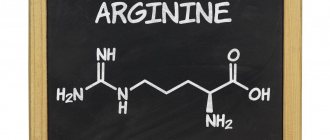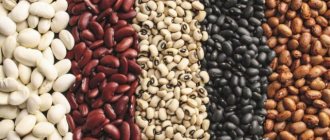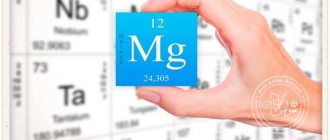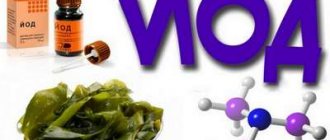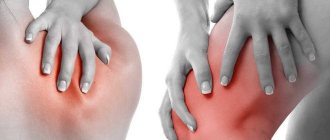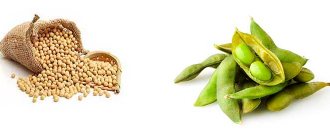Selenium is an essential microelement for human health. It can be obtained from plant, animal and marine foods. In this article we will tell you what foods contain selenium, as well as how to properly prepare and consume them in order to improve the absorption of selenium.
- What foods contain selenium?
- Top 10 foods rich in selenium
- How to improve selenium absorption?
- What interferes with the absorption of selenium?
- Products with selenium. How to cook and how to choose?
What foods contain selenium? Top 10 foods rich in selenium
Brazil nut and selenium
Brazil nuts are the record holder for selenium content. Thus, 100 grams of the product contains 1917 mcg of selenium. It is enough to eat just one or two nuts a day to fully cover the body's daily requirement for selenium.
In addition, selenium is also present in smaller quantities in cashews, pistachios, macadamia nuts, and walnuts.
Seafood and fish
Fish and seafood contain quite a large amount of selenium: 100 grams of pink salmon - 44.6 mcg, and 100 grams of oysters - 154 mcg. In addition, this microelement is rich in: sea bass, halibut, tilapia, mackerel, mussels, octopus, clams, shrimp, squid.
Seeds
Sunflower seeds contain a lot of selenium - 79 mcg per 100 grams. There is also a small amount of this trace element in chia seeds, sesame seeds and flax seeds.
Whole wheat bread
Since cereal products contain a sufficient amount of selenium, bread and bran from them are also rich in this microelement. 100 grams of whole grain bread made from wheat flour contains 40 micrograms of selenium.
Meat
100 grams of pork contains 51 mcg of microelement, beef - 44 mcg, chicken and turkey - about 40 mcg. Just like in eggs and dairy products, this microelement gets into meat by feeding poultry with special feed enriched with this substance.
Eggs
One medium egg contains 13.9 mcg of selenium. In addition, this product is rich in vitamins A and E, which improves the availability of selenium.
Mushrooms
For example, 100 grams of crimini champignons contain 26 micrograms of selenium. In addition, this microelement is found in shiitake varieties, porcini mushrooms, and different types of champignons.
Dairy
Dairy products are also known to be high in selenium. 100 grams of milk contains approximately 18 mcg of selenium, while in cheeses and cottage cheese its amount is 28-30 mcg.
Legumes
Lentils, chickpeas and beans are especially rich in selenium. 100 grams of legumes contain up to 28.5 mcg of selenium.
Cereals
Cereals such as barley, wheat, rice, buckwheat contain a fairly high selenium content. It ranges from 23 mcg of selenium to 8 mcg per 100 grams of product. It is worth noting that the less the grain was cleaned from the outer shell, the more selenium it contained.

An excess of selenium - why is it dangerous for humans?
By enriching our diet with foods high in selenium, we:
- We protect cells from the effects of free radicals;
- Stimulate the immune system;
- We protect the endocrine glands;
- We increase vitality;
- We improve the condition of the cells of the gastrointestinal mucosa, normalize the intestinal microflora, regulate the pH;
- We provide protection to liver cells;
- We carry out the prevention of heart attack, stroke, and the development of coronary heart disease;
- We prevent arthrosis, osteochondrosis;
- We prolong sexual activity in men;
- We remove heavy metals from the body;
- We ease the course of colds;
- Improve memory, attention, lift your mood
A lack of selenium during pregnancy threatens congenital deformities, premature birth, and weak labor. Selenium is also needed in higher dosages for nursing mothers.

However, it is important to know that an excess of this microelement has a very negative effect on health:
- The functioning of the gastrointestinal tract is disrupted (nausea, diarrhea, vomiting, flatulence, bad breath);
- Low performance, apathy, fatigue, lethargy;
- Redness, irritation, rash on the skin;
- Reduced blood clotting;
- Malfunctions of the liver, kidneys;
- Problems with the functioning of the thyroid gland;
- Menstrual irregularities in women;
- Decreased reproductive function in men
Selenium deficiency can occur in vegetarians, since their menu does not contain meat or fish. The daily requirement must be replenished with other products, the list of which is given above, or by taking mineral complexes containing selenium.
How to improve selenium absorption?
Combination of foods for better absorption of selenium
- Better absorption and action of selenium is facilitated by its simultaneous intake with vitamin.
- Selenium goes well with vitamin intake.
- The antioxidant effect of the vitamin is enhanced many times over when taken simultaneously with selenium.
Selenium and breastfeeding
It is worth noting that breastfeeding children do not need additional selenium supplementation. However, bottle-fed newborns have a greater risk of selenium deficiency, since most infant formulas existing today do not contain this element. Therefore, for young children it is recommended to use specialized food products that are balanced in the composition of essential microelements and vitamins.
In order to prevent selenium deficiency, it is recommended to introduce fruit, berry and cereal mixtures rich in selenium into the baby’s diet from the age of six months. Selenium will be absorbed better if the body is not deficient in vitamin E, A and C.

conclusions
The myth that Brazil nuts are almost the only product containing selenium is not true. It can easily be replaced with sunflower seeds - chew on your health! There are also a number of other natural sources. Their use will help maintain the percentage of the substance within adequate limits.
It is difficult to “earn” a selenium deficiency with a nutritious diet. But many common foods (pasta, potatoes, bread and butter) are not able to provide the required amount.
For those who seek to obtain the element from food, I advise you to reconsider your diet. The menu should be varied and contain dishes from cereals, meat, fish, and other sources of mineral salts and trace elements.
Why selenium is needed and which foods contain the most of this important element should be known to everyone who cares about their health. I have provided a list of the most valuable ones. Use it daily to maintain energy and well-being.
Products with selenium. How to cook and how to choose?

The origin of the products and the further method of their processing are of great importance. Legumes and grains grown in poor soils contain low amounts of selenium. The soil of central and southern European countries is usually poor in the content of this trace element. But in most North American regions, selenium is found in abundance.
In addition, it is worth paying attention to the way the products are processed and prepared.
The best plant sources of selenium are whole, unprocessed foods, while animal sources are fresh, with low-temperature cooking methods (braising or steaming). In this case, for example, in products that have been preserved, the amount of selenium is significantly reduced.
Therefore, in order for selenium to enter the body in the proper amount, it is necessary to eat a nutritious and varied diet. Choose quality products and prepare them correctly. Add a sufficient amount of unpolished cereals, nuts, and legumes to your diet - and you will not face a selenium deficiency!
Potassium
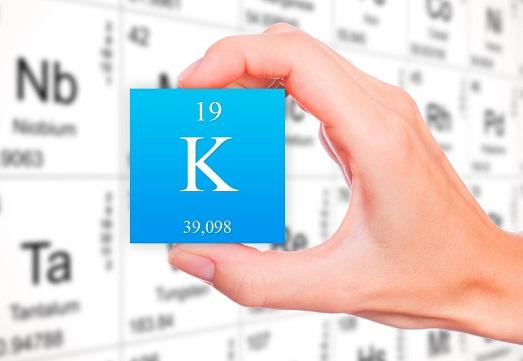
Now more about potassium:
- This element regulates the water balance in the body and controls the amount of fluid. And since excess fluid can lead to problems such as swelling, it is worth noting the positive effect on the kidneys.
- Swelling can provoke an increase in blood pressure, so we can safely say that hypertensive patients simply need this element.
- Potassium normalizes muscle function, as it controls the condition of muscle tissue.
- It is impossible not to write about the influence of this element on the nervous system. It is necessary for constant stress, anxiety and nervous strain.
- Potassium increases the body's endurance and helps us cope with heavy physical activity.
- With a lack of potassium, severe conditions associated with the depletion of all tissues of the body can develop.
- This element takes an active part in transporting oxygen to brain cells.
- Potassium is essential for the normal functioning of the heart, which is one of the most important organs.
Fruits and berries
Regarding selenium content, there are no outstanding leaders and absolutely hopeless outsiders. The only fruit that can be distinguished from the whole variety is the banana. Its Se content is 1.0 μg per 100 g of weight.
Gooseberries, mulberries, and currants contain no more than 0.6 mcg of selenium. Passion fruit, papaya, guava and some other “overseas” representatives show similar indicators. Watermelon, blackberries, and limes contain even less selenium - 0.4 mcg per 100 g of weight.
However, this result cannot be called unsatisfactory, especially against the backdrop of the fact that in most of the gifts from gardens, fields and vegetable gardens, scientists discovered only “traces of selenium”, but not its actual presence.
Cereals
If you're not a big fan of the delicacies mentioned above, then why not take a closer look at another rich source of selenium - cereals. Buckwheat, beloved by many, contains 14 mcg of selenium per 100 g of cereal. In wheat and its derivatives, Se is present in noticeably larger quantities - 70 μg. In rye – 37.9 mcg, in pearl barley – 37.7 mcg. In oatmeal and rice - approximately 10-12 mcg each. We must not forget about bread made from wholemeal flour, in which the Se content is 25-45 μg per 100 g of product.
Magnesium
Here's what magnesium gives us:
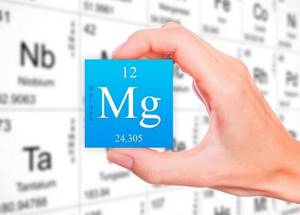
- If you feel depressed and constantly tired, then your body probably does not have enough magnesium. The fact is that this element takes an active part in the production of energy and its exchange.
- Our nervous system also needs magnesium. Without it, you will be nervous and feel constant tension.
- One of the reasons for calf muscle cramps at night is a lack of this element.
- Magnesium is also very important for the heart.
- This element helps remove harmful substances, toxins and waste from the body.
- It is important for absolutely all tissues of the body, as it promotes cellular growth.
- Since this element is capable of dilating blood vessels, we can say that it helps lower blood pressure levels.
- We must not forget about controlling blood cholesterol levels.
- And women need magnesium because it helps alleviate the condition during PMS and menstruation.
Nuts
Now we need to pay attention to products of exclusively plant origin. Mushrooms and seaweed are not one of these, so let's talk about nuts. There are many types of them, but the world leader not only among nuts, but also other products that are sources of selenium, is the Brazil nut, which demonstrates an unprecedented result - 1530 mcg Se per 100 g of weight. Next, with a huge lag, but with good indicators, are pistachios - 45 mcg, cashews - 20 mcg, walnuts - 4.8 mcg, hazelnuts - 2.4 mcg.
Here, for convenience of presentation, we can mention coconut with a result of 80 mcg, peanuts - 7.2 mcg, almonds - 2.6 mcg, although they are called nuts by mistake - they have nothing to do with this species.




